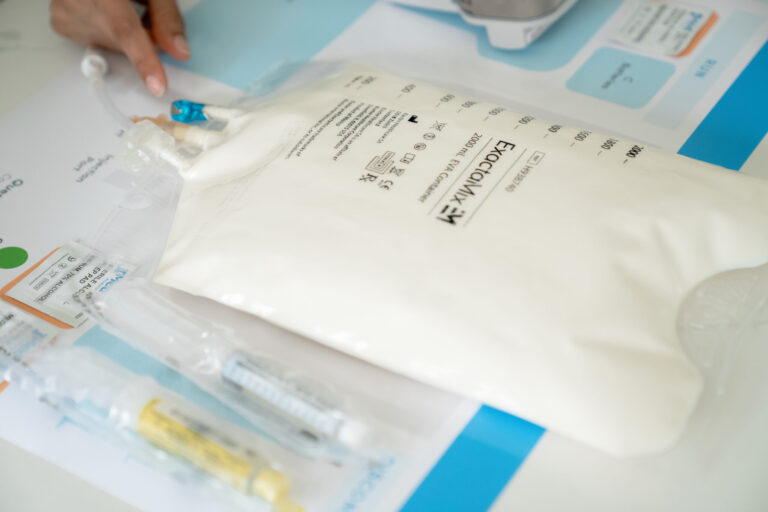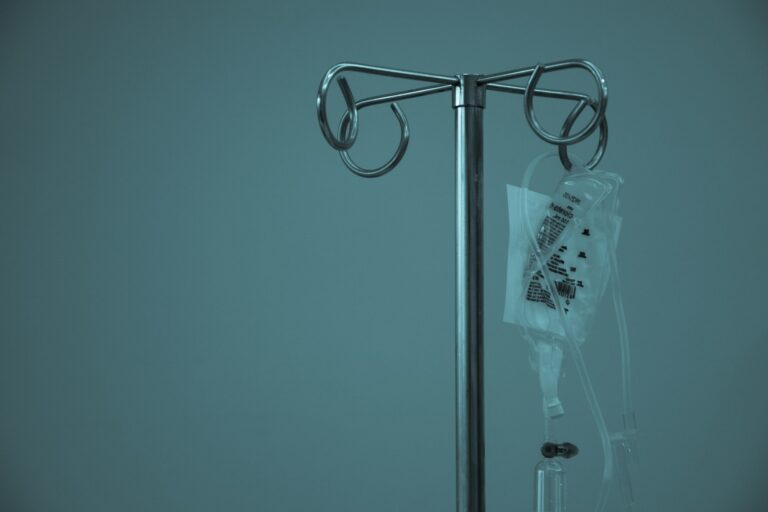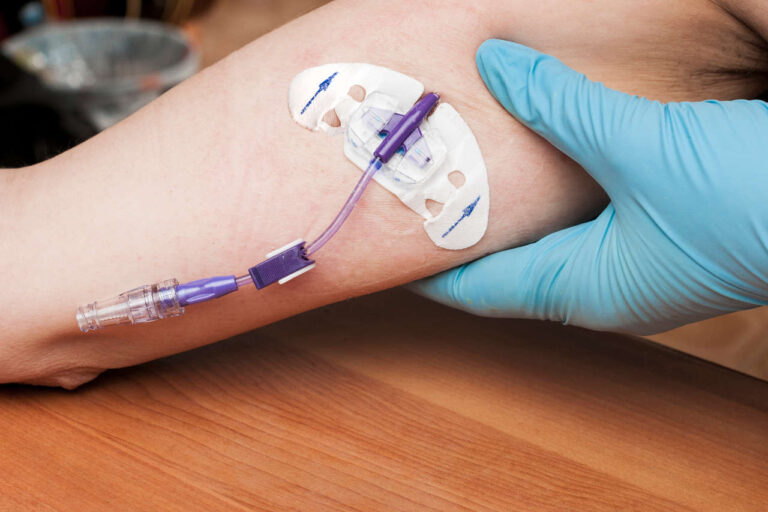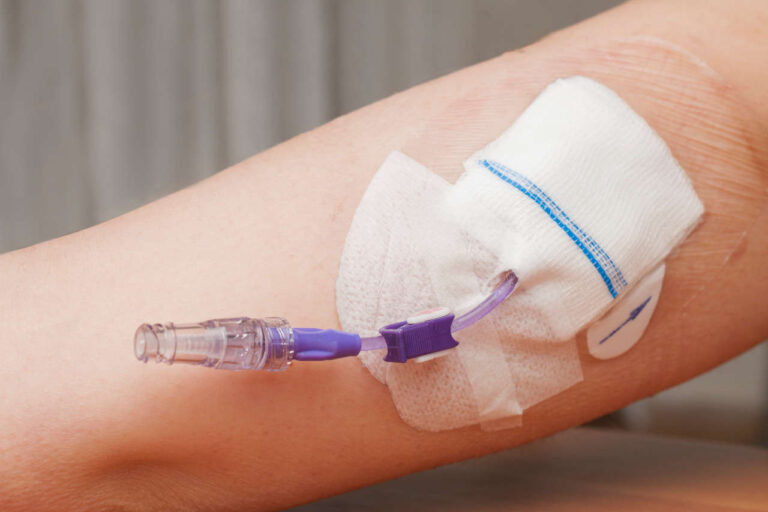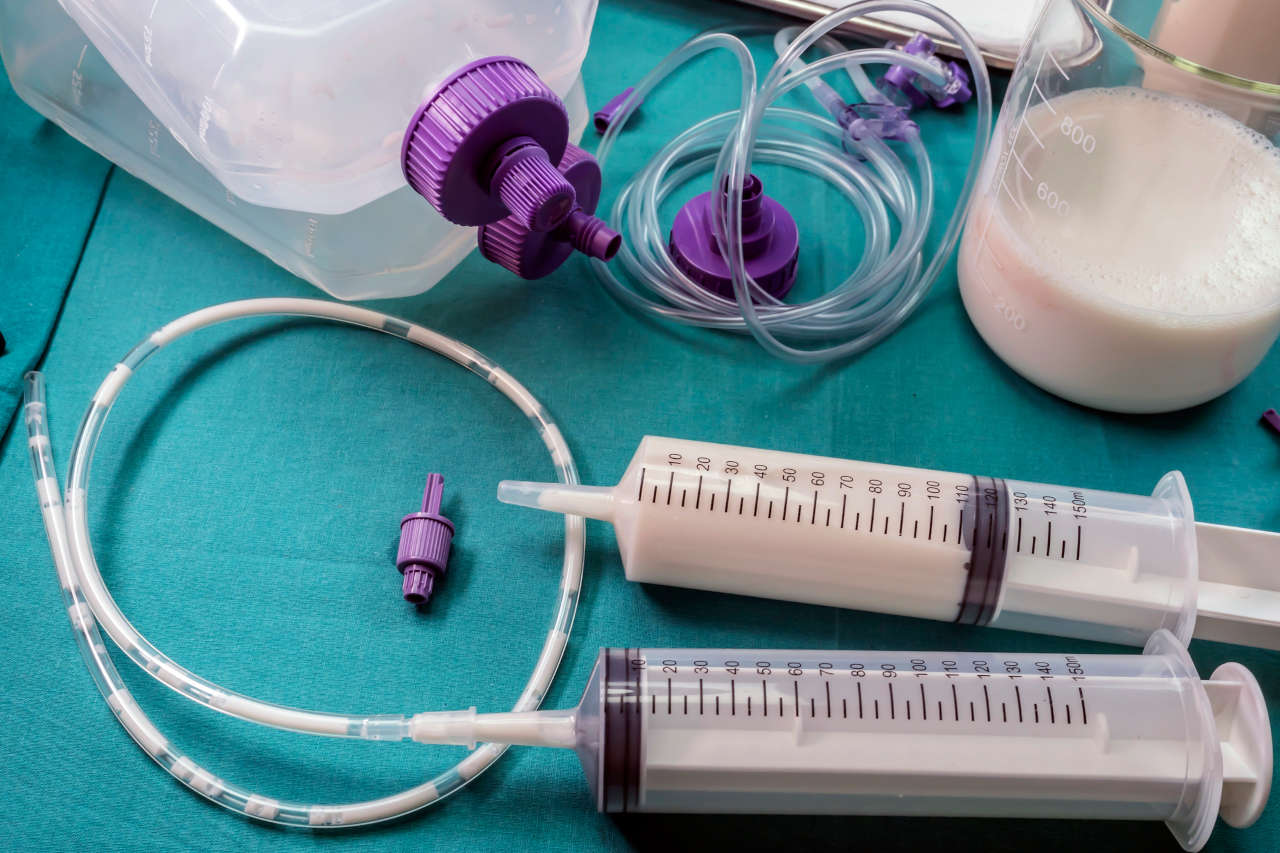
Total parenteral nutrition (TPN) and tube feeding (also known as enteral feeding) are the two common nutritional support methods that are often prescribed by medical professionals to patients who are at risk of malnutrition or have trouble digesting their food properly. Although both aim to provide essential nutrients to the body, they differ in how they are administered and the conditions in which they are used.
Always in Stock
Full inventory of IV fluids, ready for youIn this article, we’ll explore the differences between TPN vs. tube feeding, explaining the basics in simple terms to help patients and general audiences understand the important distinctions better.
What Is Total Parenteral Nutrition (TPN)?
Total parenteral nutrition (TPN) is one of the types of parenteral feeding. It involves the delivery of essential nutrients directly into the patient’s bloodstream. This method utilizes a carefully balanced solution containing carbohydrates, proteins, fats, vitamins, and minerals, which are all vital for the body’s proper functioning.
TPN is used when a patient’s digestive system is not functioning properly and the patient is unable to eat or digest food due to conditions like severe bowel obstruction, short bowel syndrome, or certain gastrointestinal disorders. It is also recommended for patients who have had GI surgery and require complete bowel rest to heal.
How Is TPN Administered?
TPN administers nutrients intravenously, which means they are supplied to your body via a central venous catheter (CVC) inserted into a large vein. The catheter is often inserted into the chest or arm. The catheter is then attached to an infusion pump, which regulates the rate at which the TPN solution is delivered. As a result, the TPN solution is delivered directly into your bloodstream.
The composition of the TPN solution is tailored according to the patient’s nutritional needs, weight, age, and underlying health conditions. This procedure usually takes 10 to 24 hours to complete.
One of the major advantages of TPN is that it offers complete nutrition, delivering all the vital nutrients in a balanced manner directly into the bloodstream. It can be a lifesaving intervention for patients who are unable to tolerate oral or enteral feeding.
What Is Tube Feeding?
Tube feeding is also known as enteral nutrition, in which essential nutrients are delivered directly into the patient’s digestive system through a tube. The feeding tube is inserted into the GI tract, either into the stomach or small intestine.
The tube feeding method is used for patients who have a functional digestive system but cannot eat or swallow normally due to conditions such as dysphagia (trouble swallowing), neurological disorders, or severe facial trauma.
Tube feeding allows patients to receive the necessary nutrients while bypassing the usual process of chewing and swallowing.
How Is Tube Feeding Administered?
Tube feeding involves placing a feeding tube through the nose, mouth, or directly into the stomach or intestines through a surgical procedure. Liquid nutrition formulas, specifically designed to meet the patient’s nutritional requirements, are administered through the tube using a syringe or an electric pump. These formulas contain a balanced mix of proteins, carbohydrates, fats, vitamins, minerals, and other necessary nutrients.
The feeding rate and formula composition are determined based on the patient’s needs and tolerance.
Key Differences Between TPN vs. Tube Feeding
Route of Administration
The significant difference between TPN vs. tube feeding is how nutrients are delivered to patients. TPN is given intravenously, directly into the bloodstream of a patient.
Unlike TPN, tube feeding is given by inserting a feeding tube into the patient’s nose, mouth, or digestive system (such as the stomach or small intestine).
Digestive System Involvement
TPN completely bypasses the digestive system and delivers nutrients directly into the bloodstream. This method is independent of whether the GI system is functioning or not.
Unlike TPN, tube feeding relies on gastrointestinal functioning. A patient receiving tube feeding must possess a functional GI system because the nutrients follow the same path as normally eaten food.
Ask About TPN Home Infusion
Feeding Solution
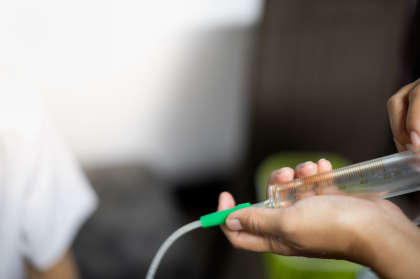
Although the nutrients of the feeding solution are the same in both TPN and tube feeding, they differ in consistency. In TPN, the solution is typically a clear and sterile liquid. This homogeneous solution provides a complete balance of nutrients, including carbohydrates, proteins, fats, vitamins, and minerals. The consistency of TPN solutions is uniform, ensuring that all essential nutrients are dissolved and well-mixed.
On the other hand, in tube feeding, the consistency of the formula can vary based on the patient’s specific needs and can range from thin and watery to thicker and more viscous. For instance, some patients may require thinner formulas if they have difficulty swallowing or have a nasogastric tube, while others may need thicker formulas if they have a jejunostomy tube and need slower gastric emptying.
Additionally, tube-feeding formulas come in different forms, such as ready-to-use liquid formulas or powdered formulas that require reconstitution with water or another suitable liquid.
Conditions for Usage
TPN is used when the digestive system cannot absorb nutrients effectively, such as in severe bowel obstruction or gastrointestinal disorders.
Tube feeding is employed when the digestive system can still process food, but the patient is unable to eat normally for various reasons.
Complications and Risks
TPN carries a higher risk of a catheter or central line infection and other complications associated with intravenous administration, such as an imbalance in nutrient ratio.
Tube feeding has low risks of complications. If a complication does occur, it could be related to the feeding tube placement, such as infection or tube dislodgement. It may also cause a risk of aspiration when the formula enters the lungs instead of the stomach.
Duration of Usage
TPN is usually used for a short-term duration until the underlying condition improves. In the most severe cases, such as GI disorder, it is also used for a long-term duration.
The feeding tube is used temporarily (short-term), depending on the patient’s condition and needs, although it can be used indefinitely if needed.
Cost
Another major difference between TPN vs. tube feeding is the cost factor. TPN is more expensive and has more potential complications, while tube feeding is cheaper and has fewer complications.
Conclusion
Total parenteral nutrition (TPN) and tube feeding serve as valuable methods for providing nutrition to individuals who are unable to eat normally. TPN delivers nutrients directly into the bloodstream, bypassing the digestive system, and is used when the digestive system cannot effectively absorb nutrients. On the other hand, tube feeding involves administering nutrition through a tube into the nose, mouth, stomach, or small intestine, depending on the patient’s condition.
REFERENCES:
- Seres, D. S., Valcarcel, M., & Guillaume, A. (2013). Advantages of enteral nutrition over parenteral nutrition. Therapeutic Advances in Gastroenterology, 6(2), 157–167. https://doi.org/10.1177/1756283×12467564
- Hamdan, M. (2022, July 20). Total Parenteral Nutrition. StatPearls – NCBI Bookshelf. https://www.ncbi.nlm.nih.gov/books/NBK559036/
- Jamieson, N. C. (2022, July 25). Feeding Tube. StatPearls – NCBI Bookshelf. https://www.ncbi.nlm.nih.gov/books/NBK559044/
- Tube feeding: MedlinePlus Medical Encyclopedia Image. (n.d.). https://medlineplus.gov/ency/imagepages/19965.htm
- Types of tube feeding. (n.d.). Coping | Cancer Research UK. https://www.cancerresearchuk.org/about-cancer/coping/physically/diet-problems/managing/drip-or-tube-feeding/types

